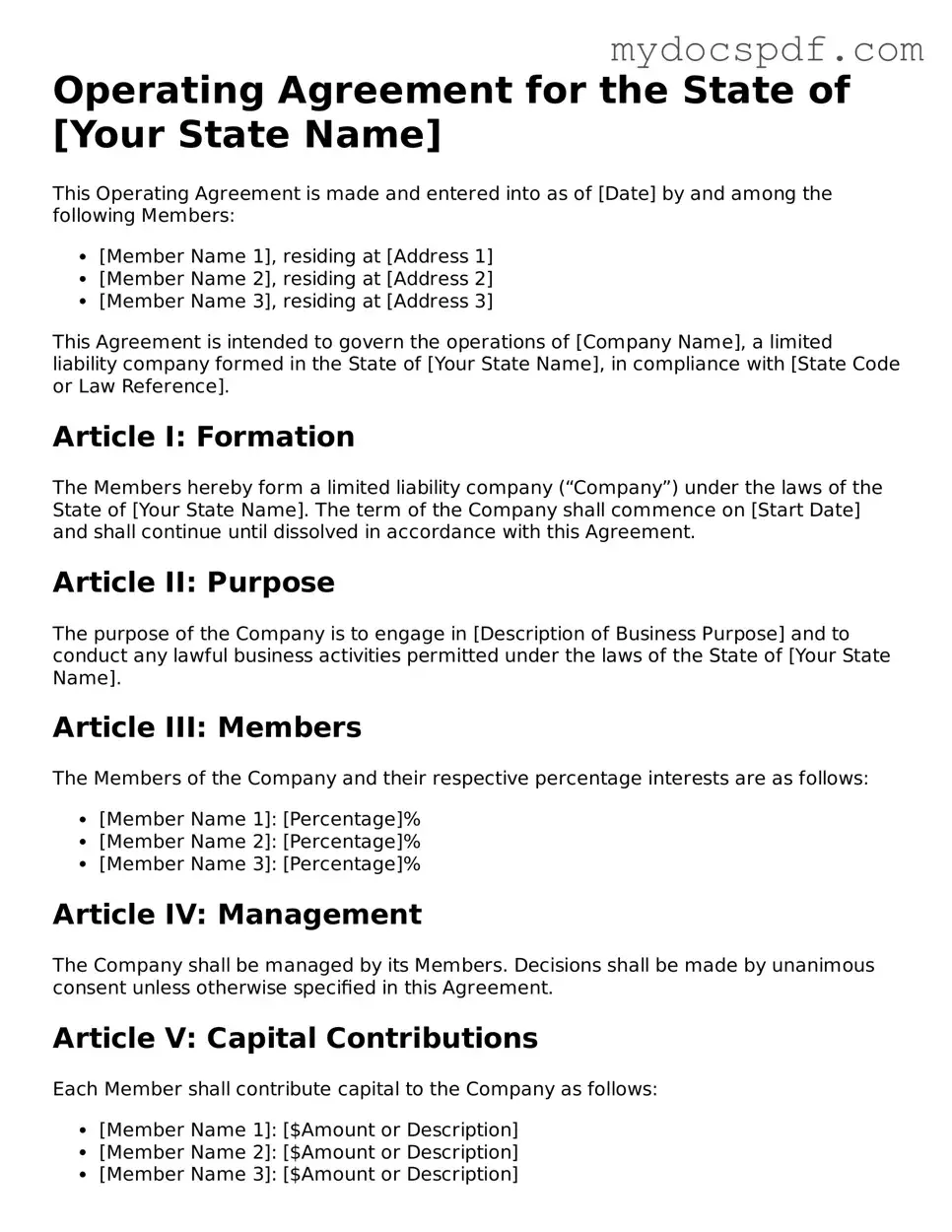Operating Agreement for the State of [Your State Name]
This Operating Agreement is made and entered into as of [Date] by and among the following Members:
- [Member Name 1], residing at [Address 1]
- [Member Name 2], residing at [Address 2]
- [Member Name 3], residing at [Address 3]
This Agreement is intended to govern the operations of [Company Name], a limited liability company formed in the State of [Your State Name], in compliance with [State Code or Law Reference].
Article I: Formation
The Members hereby form a limited liability company (“Company”) under the laws of the State of [Your State Name]. The term of the Company shall commence on [Start Date] and shall continue until dissolved in accordance with this Agreement.
Article II: Purpose
The purpose of the Company is to engage in [Description of Business Purpose] and to conduct any lawful business activities permitted under the laws of the State of [Your State Name].
Article III: Members
The Members of the Company and their respective percentage interests are as follows:
- [Member Name 1]: [Percentage]%
- [Member Name 2]: [Percentage]%
- [Member Name 3]: [Percentage]%
Article IV: Management
The Company shall be managed by its Members. Decisions shall be made by unanimous consent unless otherwise specified in this Agreement.
Article V: Capital Contributions
Each Member shall contribute capital to the Company as follows:
- [Member Name 1]: [$Amount or Description]
- [Member Name 2]: [$Amount or Description]
- [Member Name 3]: [$Amount or Description]
Article VI: Distributions
Distributions of profits and losses shall be allocated to the Members in proportion to their percentage interests in the Company.
Article VII: Withdrawal of a Member
A Member may withdraw from the Company by providing at least [Notice Period] written notice to the other Members. The remaining Members shall have the option to purchase the withdrawing Member's interest at fair market value.
Article VIII: Amendments
This Operating Agreement may be amended only by a written agreement signed by all Members.
Article IX: Dissolution
The Company may be dissolved by the unanimous consent of the Members or as otherwise provided by law. Upon dissolution, assets shall be distributed to Members in proportion to their respective interests.
Article X: Miscellaneous
This Agreement constitutes the entire agreement among the Members relating to the Company. It supersedes all prior agreements and understandings, both written and oral, regarding that subject.
IN WITNESS WHEREOF, the Members have executed this Operating Agreement as of the date first above written.
__________________________
[Member Name 1]
__________________________
[Member Name 2]
__________________________
[Member Name 3]
